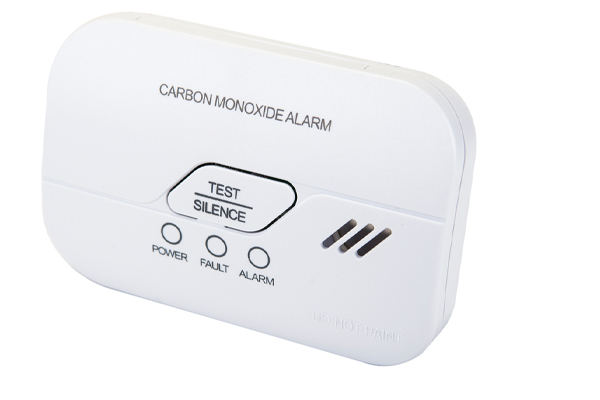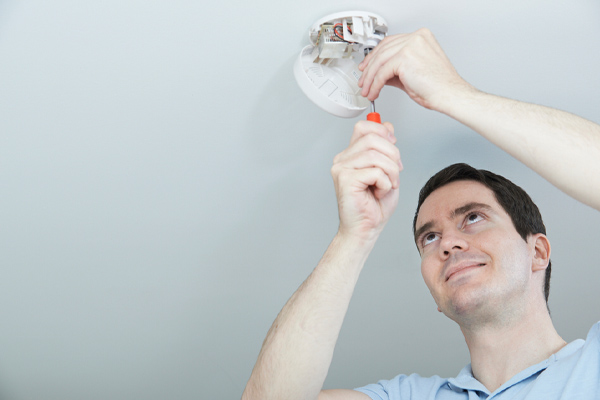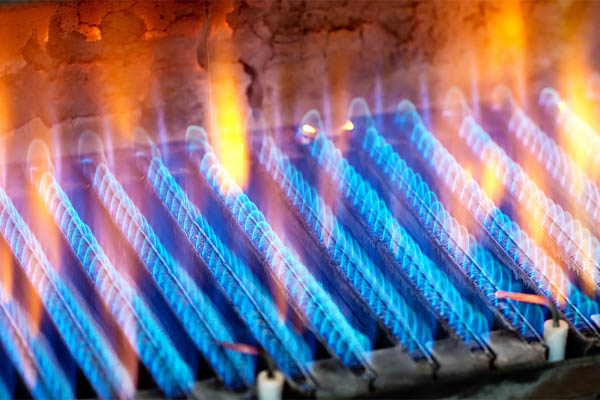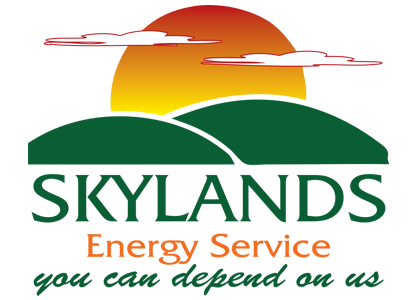Updated: 11/11/2024

One of your priorities during the cold months should be having a safe and warm home. Therefore, you need a fully operational and well-maintained heating system. These systems are generally built tough, but they are not invincible. A heating system generates heat through the burning of fuel. Like any other fuel-powered machine, a heating system produces carbon monoxide (CO) during combustion. Take this into consideration, including the various risks associated with it. You need to ensure that you have a working carbon monoxide detector at home when you are using your heating appliances.
Carbon monoxide is a colorless, tasteless, and odorless gas. It can be toxic to humans and animals. Exposure to CO for a prolonged time can be fatal as well. The good news is that you can do a few things to ensure that this hazardous gas doesn’t become a threat to you and your family. This article by Skylands Energy Service discusses signs of carbon monoxide exposure and the importance of a CO alarm.
What Is CO, And When Is It A Threat?
Table of Contents
The heating process generates CO. Since it doesn’t have any smell or color, our senses cannot detect it. Therefore, it is necessary to have a carbon monoxide detector if your home uses natural gas, charcoal, wood, propane, or heating oil.
A venting system is usually installed in homes that have indoor fuel-burning heaters and appliances. This venting system is crucial in preventing CO poisoning as this ensures that the harmful gas is released outside so that the home’s occupants do not inhale it. Every fuel-powered heating system and appliance in your home should be installed and vented correctly. They should be maintained regularly as well. This way, these systems and appliances are in excellent working condition and are less likely to leak CO. If any problems arise, a carbon monoxide detector will help detect them early so that you can take evasive actions quickly.
What’s The First Step In Carbon Monoxide Safety?

Installing a high-quality carbon monoxide alarm and detector is the first step to having a CO-safe home. This device is battery-operated and should be installed near any CO-generating appliance. It should also be tested regularly and have its batteries replaced periodically. Make sure to do these maintenance steps before the winter season starts. Read the manufacturer’s manual and follow its instructions carefully when installing the CO detector in your home. This will help you conduct proper installation, testing, and maintenance.
Stay Warm All Winter Long: Trust Skylands Energy Service to keep your home cozy and comfortable. Call now!
Several Common Causes Of Indoor CO Buildup
Problems with the ventilation of your heating system can lead to carbon monoxide accumulation. If you have a faulty or worn-out heating unit, CO can also end up leaking. Therefore, aside from your carbon monoxide alarms, you must have your heating system checked and maintained annually as well.
It is recommended that you have your yearly HVAC tune-up before the arrival of the heating season. This is an excellent way to protect your family from CO leaks. Your home is at risk of carbon monoxide exposure if there are any backdrafts near your heater or clogs in the flue or vent. Call your local, trusted HVAC technician to perform proper diagnosis and repairs. Doing it before the heating season begins will help you avoid having any problems with your system, especially when you need it the most.
Another Common Sign Of CO Buildup Or Leak

Carbon monoxide buildup can also be seen in ways other than alerts from your carbon monoxide alarm. Fuel combustion creates CO as exhaust. Your system’s exhaust will look differently depending on the fuel you use. For instance, an oil-powered heating system will have signs of soot and smoke if there is carbon monoxide in your home. Contact your local, trusted HVAC technician right away when you notice your oil-burning system releasing more soot.
Experience Reliable Heating Solutions: Let our expert team handle all your home heating needs with precision. Contact us today!
Mild, Moderate, And Severe Symptoms Of Carbon Monoxide Exposure

Carbon monoxide is poisonous to humans and animals regardless of the amount. The more CO is in your home and the longer your exposure is, the more extensive and symptoms you’ll have.
Mild symptoms mean you’ll experience dizziness, headache, nausea, and fatigue. Moderate symptoms will have you feeling confused, disoriented, drowsy, and have extreme headaches. Severe CO poisoning symptoms include convulsions, fainting, and heart failure. Even worse, it can lead to fatalities.
Efficient Heating at Your Fingertips: Discover how our services can enhance your home’s warmth and efficiency. Call today!
Steps To Take When You Suspect CO Exposure
When anyone in your family shows signs of carbon monoxide poisoning, turn off all appliances that use fuel immediately. Let fresh air circulate in your home by opening doors and windows as well. Once you are done with this, go outside right away. Report any CO poisoning symptoms you feel to a doctor immediately. Make sure to do these steps once your CO detectors go off. Never think that your carbon monoxide alarm is alerting you falsely. After all, it is better to be safe than sorry during these situations.
Carbon Monoxide FAQs
What Is Carbon Monoxide and Why Is It Hazardous?
Carbon monoxide (CO) is a colorless, odorless gas that arises from the incomplete combustion of fossil fuels such as gas, oil, wood, and coal. It is extremely hazardous because it can infiltrate your home without detection, leading to severe health complications. Exposure to elevated levels of carbon monoxide can result in symptoms ranging from headaches, dizziness, and nausea to more serious conditions, including loss of consciousness and even death. Understanding the risks associated with CO is crucial for maintaining a safe living environment.
How Can I Identify Carbon Monoxide in My Residence?
The most effective way to identify the presence of carbon monoxide in your home is to install CO detectors on every level, especially near sleeping areas. These detectors continuously monitor air quality and will sound an alarm if they detect dangerous levels of CO. For optimal safety, choose detectors that meet the latest safety standards, and consider models with digital displays for real-time CO level readings. Regular maintenance of these devices, including testing and battery replacement, is essential to ensure they function correctly when needed.
What Are the Typical Sources of Carbon Monoxide in a Household?
Common sources of carbon monoxide in residential settings include gas furnaces, water heaters, stoves, fireplaces, and any appliances that burn fuel. Other potential sources include running vehicles in attached garages, using gas-powered generators, and operating grills indoors. It’s important to be aware of these risks and to ensure proper ventilation in areas where fuel-burning appliances are used. Regular inspections of these devices can help identify and mitigate potential sources of CO before they become a hazard.
Don’t Let the Cold Catch You Off Guard: Schedule your heating service with us for peace of mind this winter. Reach out now!
What Steps Should I Take If My Carbon Monoxide Alarm Activates?
If your carbon monoxide detector activates, it’s vital to act quickly. Immediately evacuate everyone from your home and call emergency services for assistance. Do not return to the house until professionals have thoroughly inspected the premises and confirmed it is safe. While evacuating, make sure all family members are accounted for, and avoid using any fuel-burning appliances until they have been assessed. This proactive approach can be lifesaving, ensuring that you and your loved ones are safe from the dangers of CO exposure.
How Can I Avoid Carbon Monoxide Poisoning in My Home?
Preventing carbon monoxide poisoning involves a combination of proper installation, regular maintenance, and safe practices. Ensure all fuel-burning appliances are correctly installed and undergo routine maintenance checks by certified professionals. Avoid using generators, grills, or other gas-powered equipment indoors, as these can produce lethal levels of CO. Keep vents and chimneys clear of debris to ensure proper airflow. Additionally, routinely test your CO detectors and replace batteries as needed to maintain their functionality. Staying informed and vigilant can significantly reduce the risk of CO poisoning in your home.
Conclusion
Carbon monoxide poisoning should be taken seriously at all times. Homes that use fuel-burning systems and appliances should take the necessary precautions to prevent it from happening. Remember that a fully operational and well-maintained carbon monoxide detector is your best protection against it. Make sure that your heating system is maintained once a year to help prevent CO leaks and poisoning.
We cannot see or smell CO because it is colorless and odorless. A carbon monoxide alarm will alert you if CO is present in your home. However, it is still best to prevent it from happening by having your heating system inspected and maintained by an HVAC expert. Book your annual heating system tune-up ahead of the cold season.
Your Comfort Is Our Priority: Depend on Skylands Energy Service for timely and effective heating solutions. Call now!
Call Skylands Energy Service For All Your HVAC Needs
Skylands Energy Service is the premium provider of heating and cooling solutions in Central New Jersey. Our professionally certified technicians excel in HVAC tune-ups, repairs, installations, replacements, and more. You can rely on our expertise to service your system with precision. As the most trusted HVAC service provider, we are ready and eager to assist you!
We offer the most cost-effective heating and cooling services around the area. Known for quality service at affordable prices, our maintenance services enhance comfort and energy efficiency, lowering your home heating and cooling expenses. Our team will help you find the ideal HVAC solution that fits your budget. We stand by our work with a satisfaction guarantee. Contact us today to book your service appointment. Call now!
Skylands Energy Service stands behind our services with a solid satisfaction guarantee. To arrange a service visit and receive a complimentary, in-home estimate, contact Skylands Energy Service today.
Contact us now at (908) 707-1776 to find out more! Click the link to view our service area.

Related Articles:

